1lumen selects and reviews products personally. We may earn affiliate commissions through our links, which help support our testing.
Cyansky P25 review
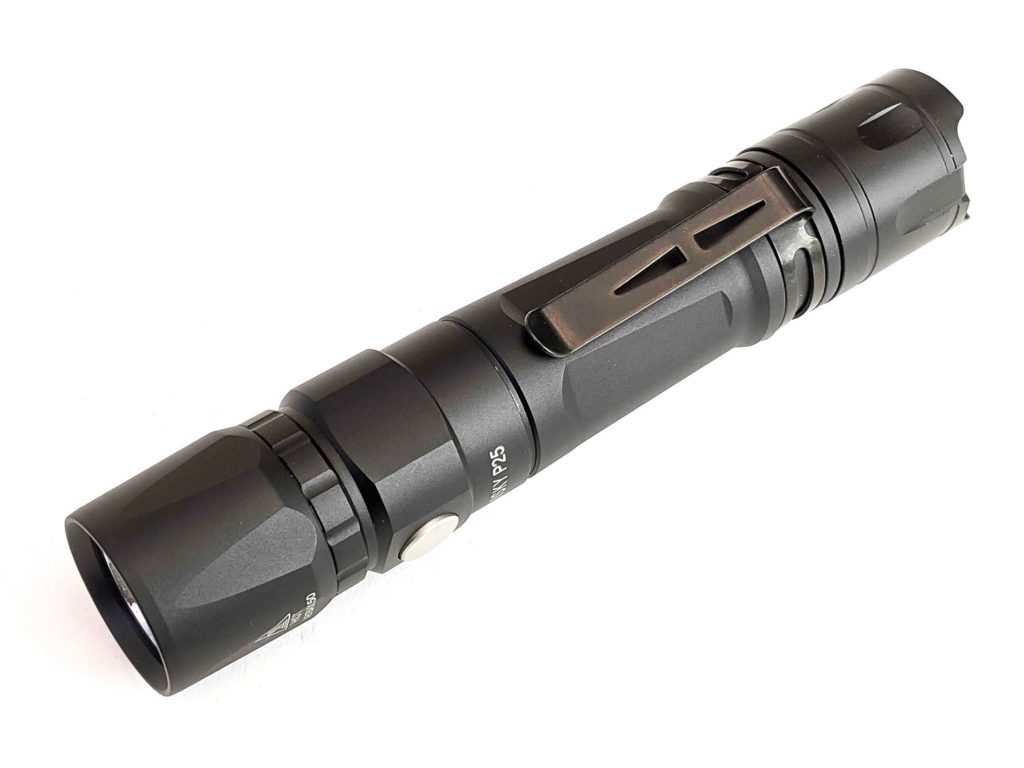
Cyansky P25 specifications
| Brand/model | Cyansky P25 |
|---|---|
| LED | CREE XHP70.2 |
| Lumens | 3,000 lm |
| Beam intensity | 9220cd (192m) |
| Battery config. | 1*21700 (included) |
| Material | Aluminum |
| Modes | 4 |
| Blinkies | Strobe |
| Reflector | OP reflector |
| Waterproof | IP68 (2m underwater) |
| Review date | March 2021 |
Introduction:
Note: the Cyansky P25 has been upgraded, and replaced, by the Cyansky P25 v2.
The Cyansky P25 is a fairly normal looking tactical light from Cyansky (owned by Freasygears). It shares some of the same design language as their Cyansky H5 that we reviewed.
The P25 has an XHP70.2 LED, which makes it bright and floody, without much throw. There’s a few other dual switch lights with that LED, like the Jetbeam TH20, Klarus XT21X and Thrunite TT10.
Package
Cyansky used a folded plastic box for the P25, just like their Cyansky M3 that we reviewed recently. The back of the box includes the specs and also includes a crude runtime diagram. I wish more manufacturers would do this, as it shows the step down from turbo and gives a good overview at a glance. The diagram includes a zigzag for the turbo runtime, which looks weird but if you read on then it’ll make sense.
- Cyansky P25
- 21700 cell
- Holster
- Clip
- Lanyard
- Spare O-ring
- Spare rubber switch boot
- Manual
- Warranty card
- Cell warning note
The cell is packaged inside the light, along with a plastic insulator that needs removing.
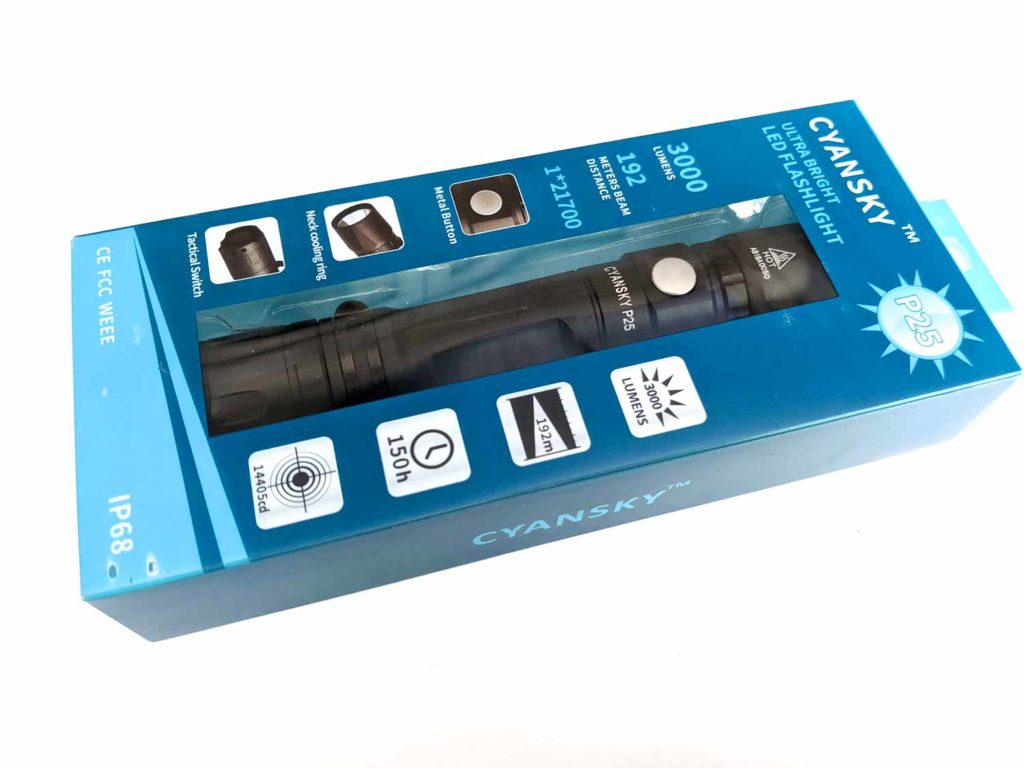
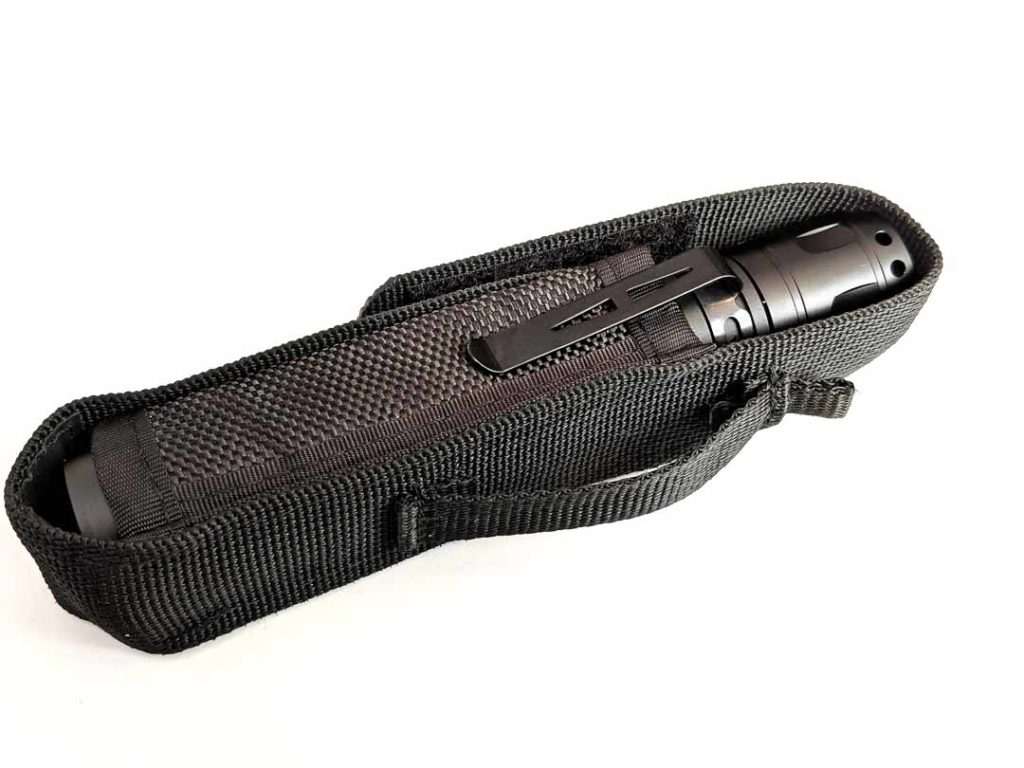
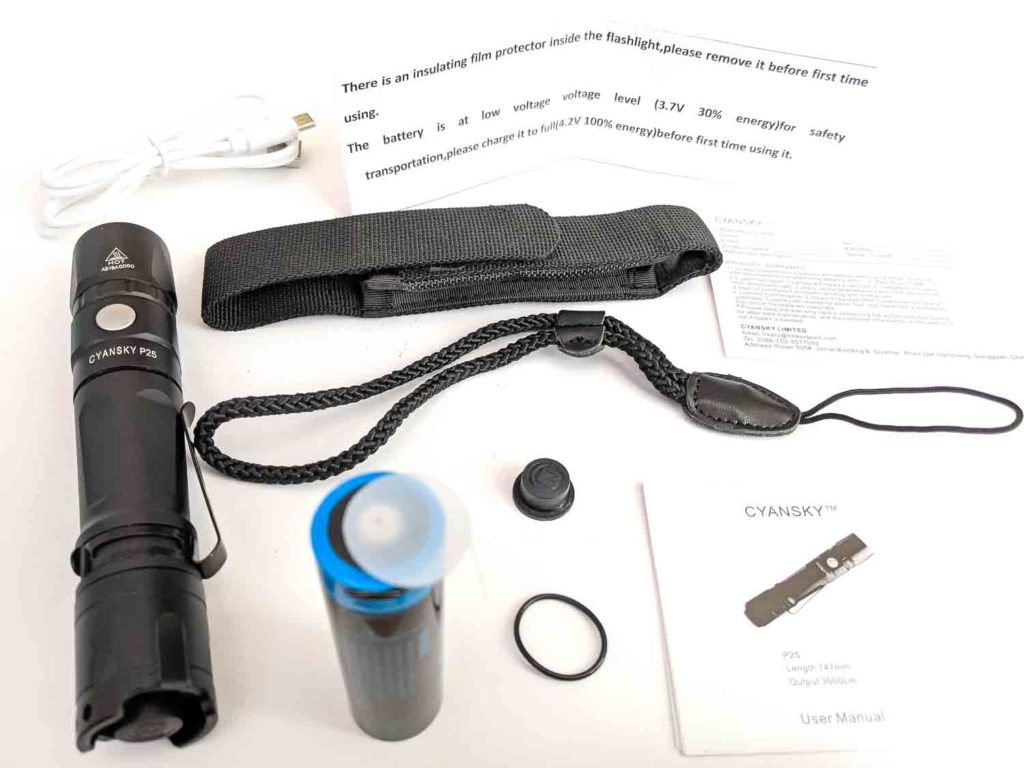
Flashlight in use
The P25 is a fairly standard straight-tube tactical light, so will be pretty much what you’d expect. It’s longer than any other straight tube flashlight that I own but it doesn’t feel too big and the 2 switches are easy to reach. The P25 has a mechanical forward clicky switch at the tail and an e-switch on the side. The e-switch is the same style as the one found on the Cyansky H5 but doesn’t protrude nearly as much.
Despite being smooth and slippery in places, you don’t feel like you’ll drop it due to the various bumps and changes in diameter. These bumps will stop it rolling too. It will tail stand but isn’t very stable.
The clip is short relative to the P25’s length but is strong and works fine. If you want better retention, there’s always the included holster, with velcro and a belt loop. The holster is reasonable quality and fits the light well, even with the pocket clip attached.
The other retention option is the lanyard. This is the most fancy lanyard I’ve seen with a flashlight and puts all the other lanyards I have to shame. The lanyard is a challenge to thread through the holes but once that’s done it feels very secure.
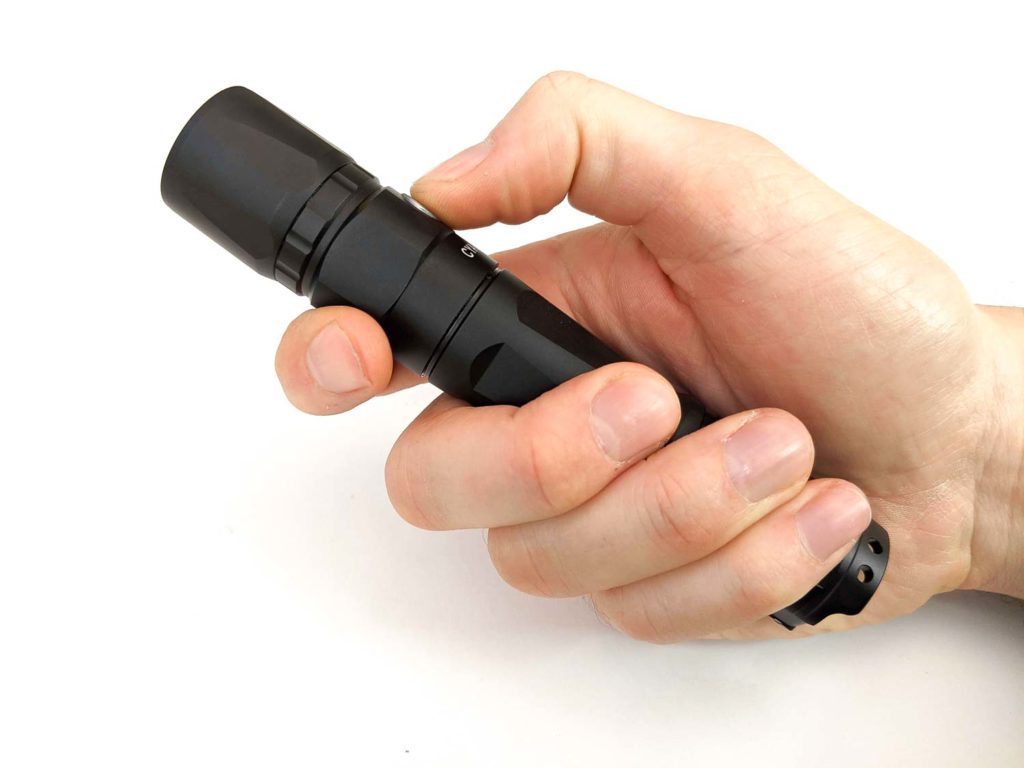
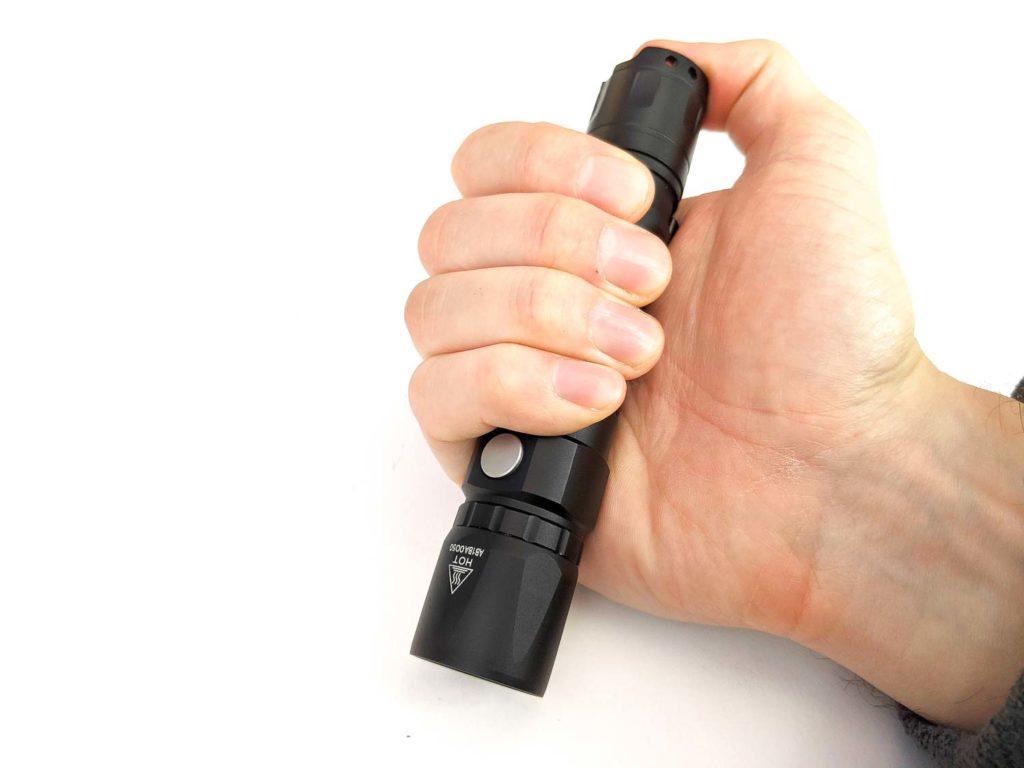
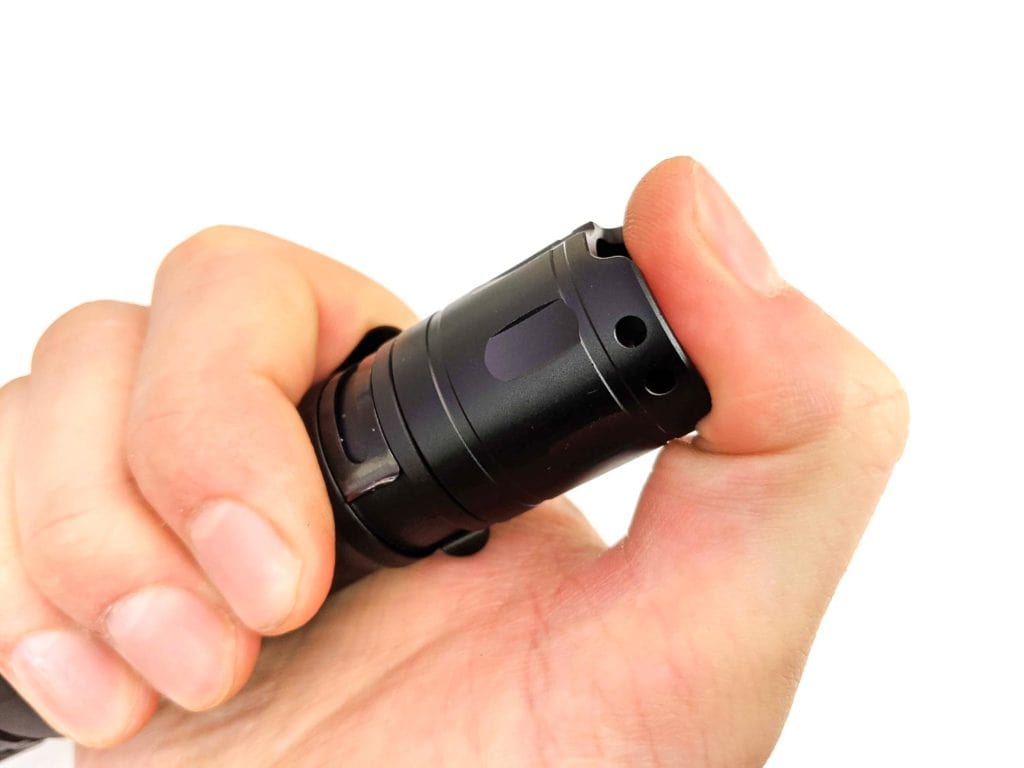
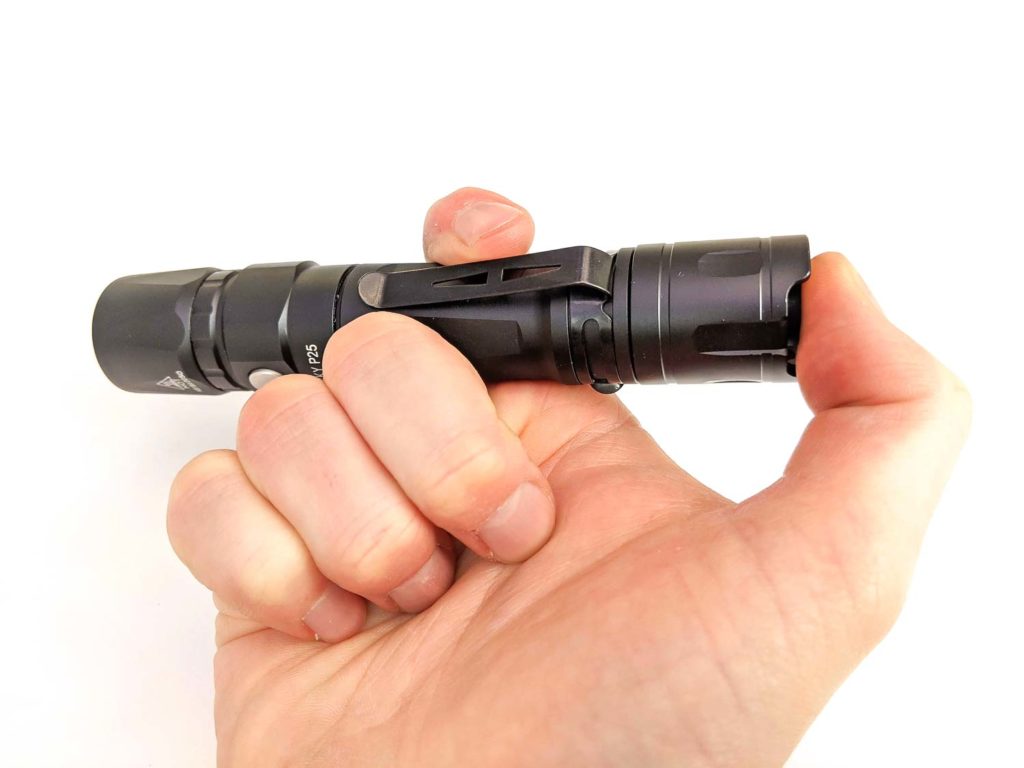
Build Quality, and Warranty
There’s no knurling on the P25 but it doesn’t feel like it needs it. The aluminium anodising is shiny and smooth. The tailcap spring appears beefy enough.
The threads on the tail end are smoothly square cut and anodised, so you can lock out the light with a quarter turn. The other end unscrews too but requires a bit more force. The threads on the head end are the same but it looks like Cyansky doesn’t intend for you to remove it here. The threads have a slightly blue substance: possibly some kind of thread lock but not a strong one. If you unscrew it here then you’ll need to clean up the glue, to ensure there’s still a good electrical contact. If you don’t need to unscrew it then I’d recommend not bothering.
There’s no spring on the head end but instead there’s physical reverse polarity protection.
Freasygears / Cyansky provide a 5 year warranty, where they’ll repair or provide a replacement if the flashlight fails due to material or workmanship
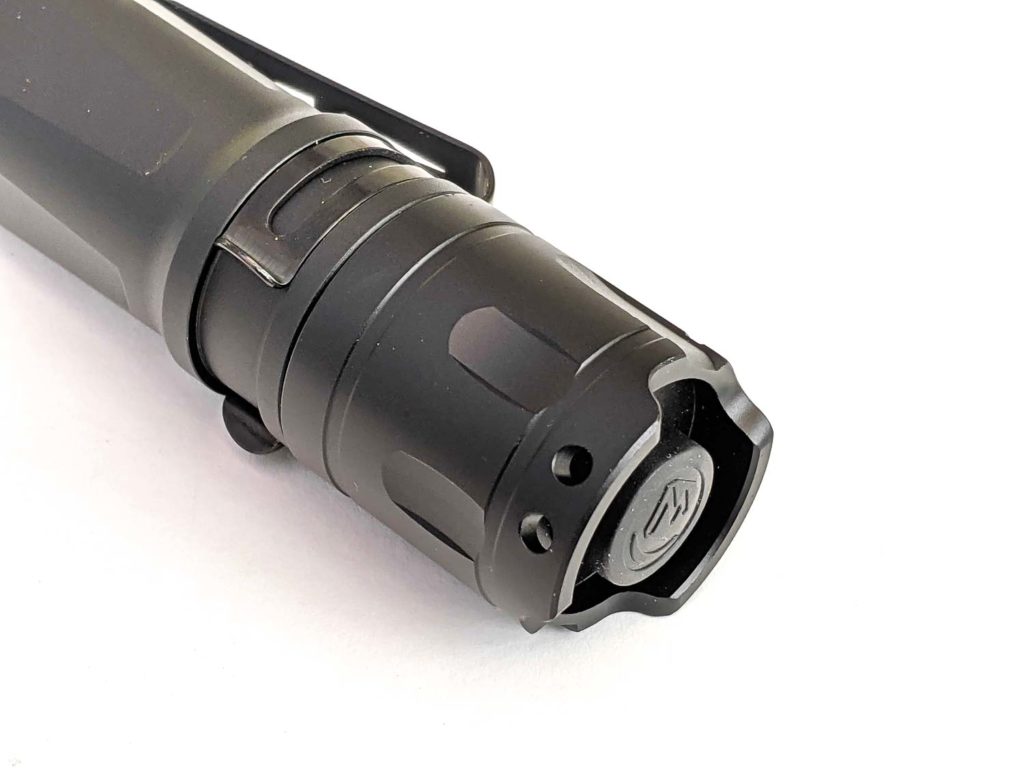
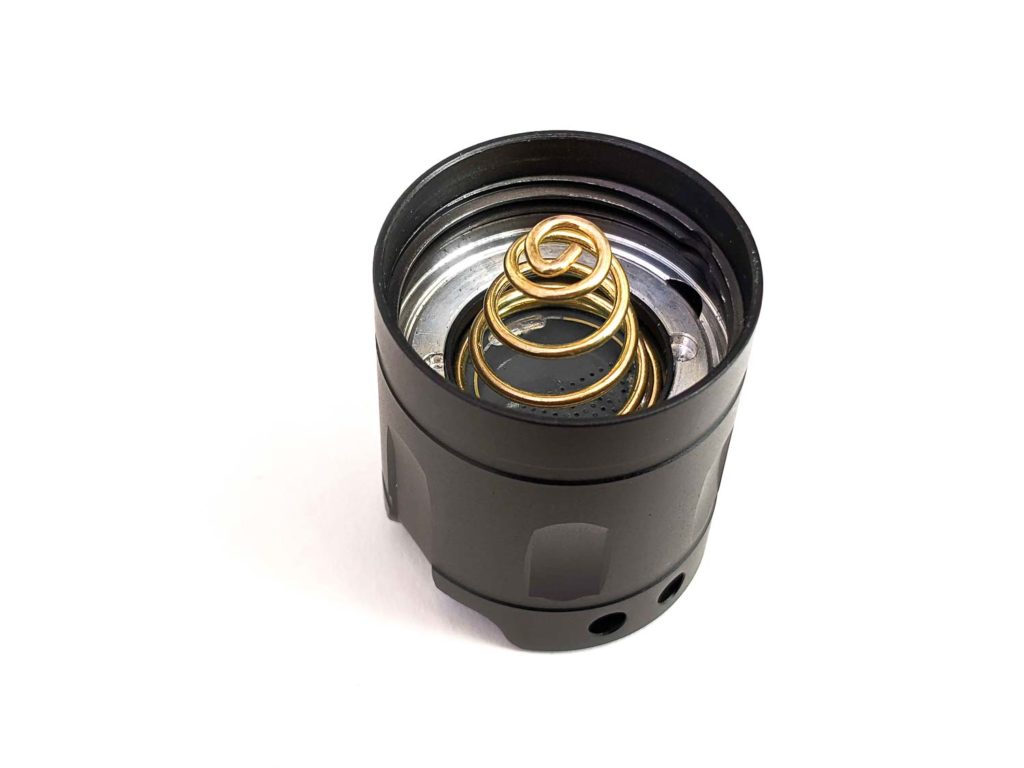
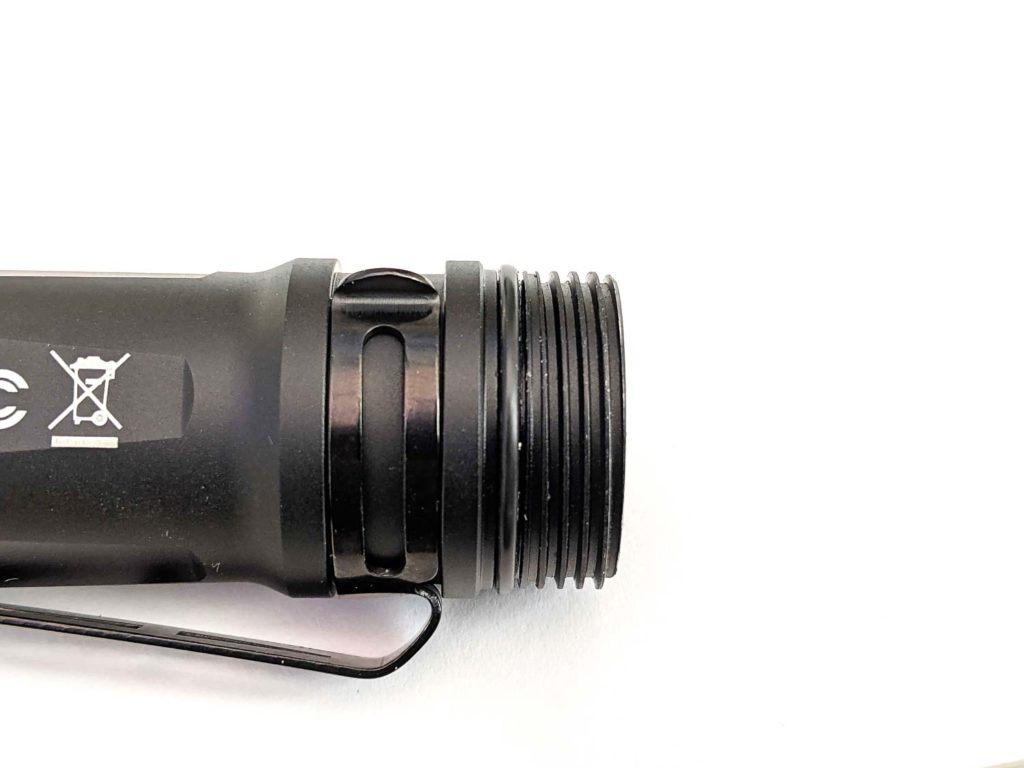
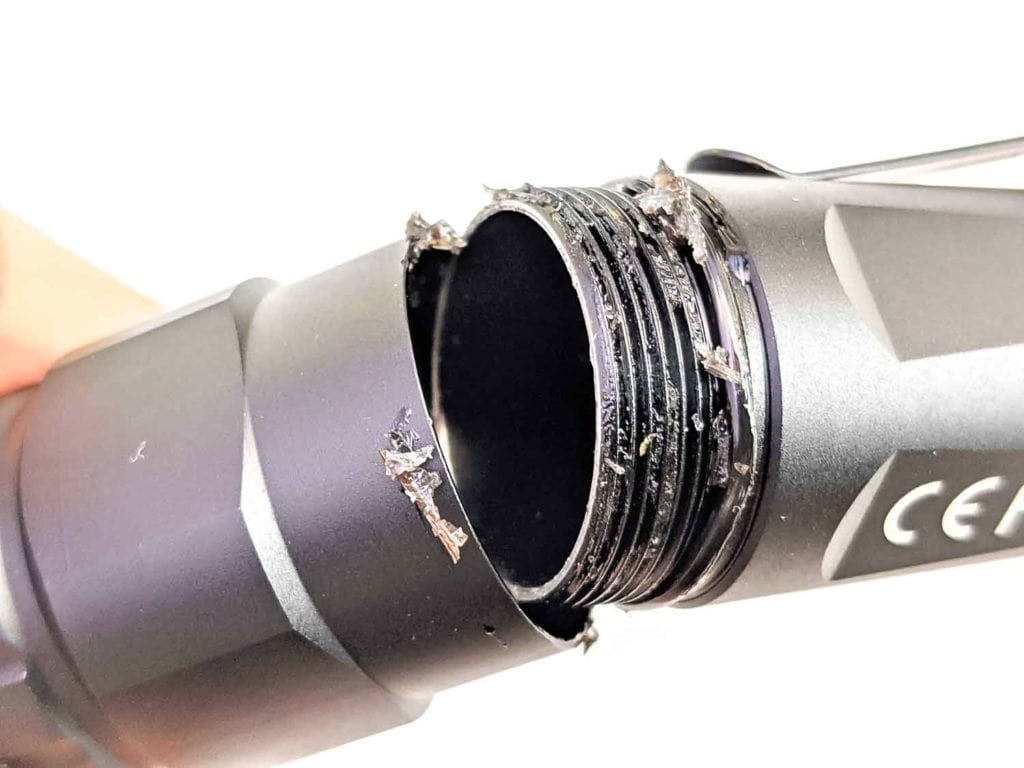
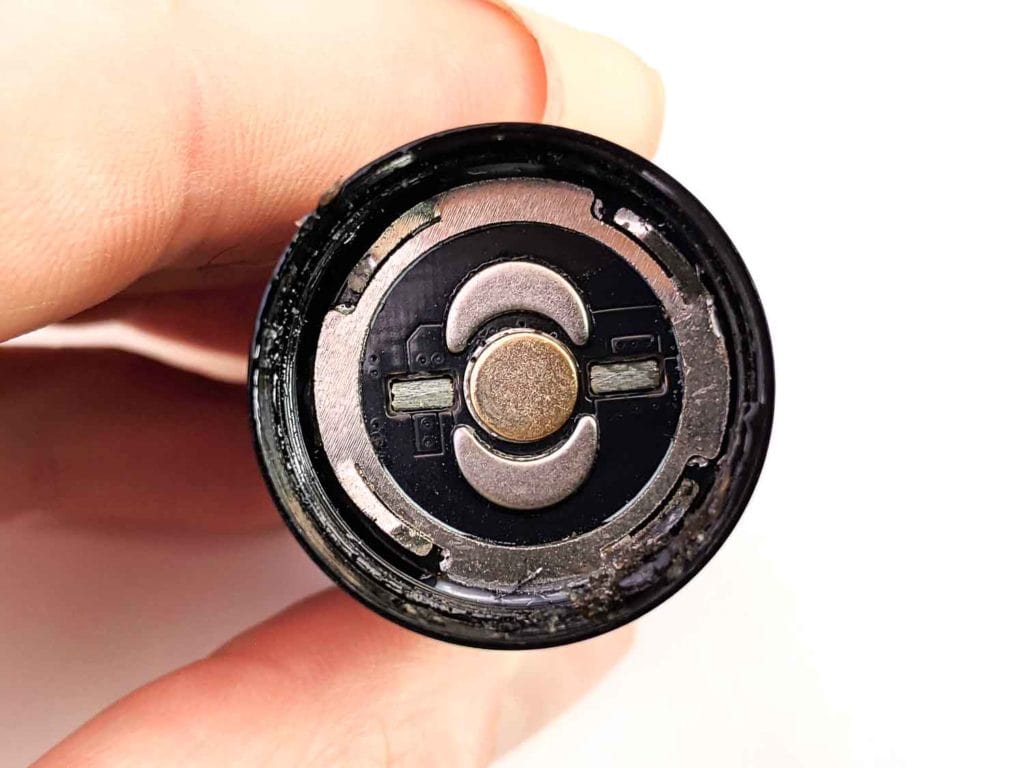
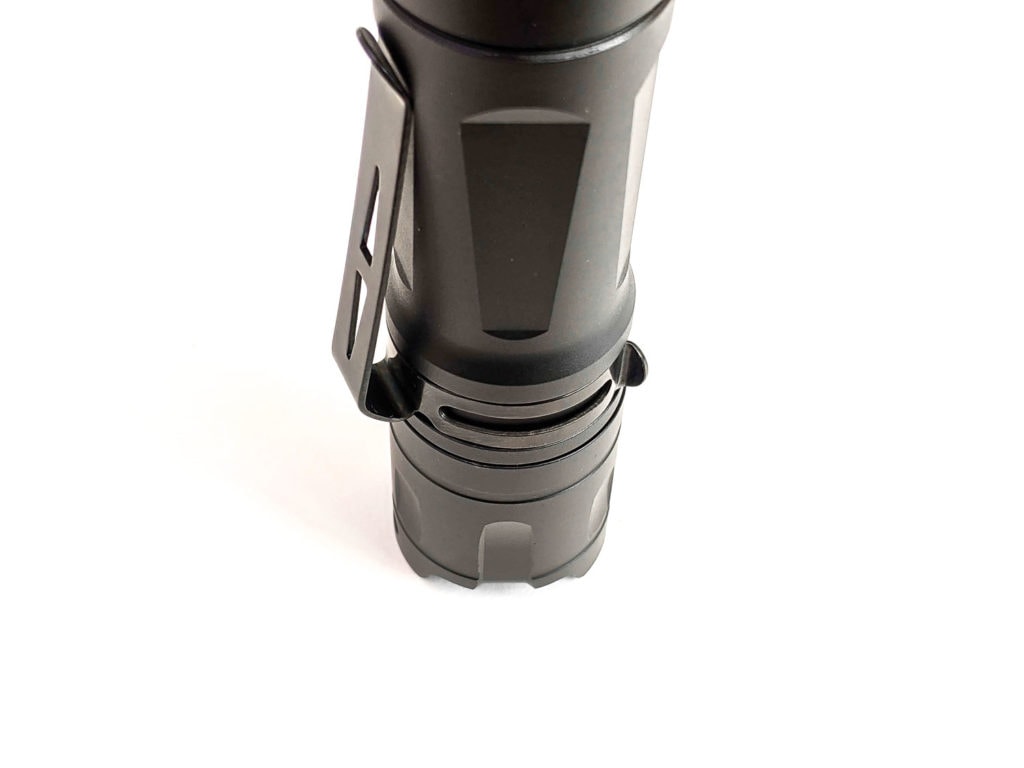
LED, Lens, Bezel, and Reflector
You may have already noticed the big XHP70.2 LED in this flashlight. These are 7mm square and produce lots of lumens. The relatively small orange peel reflector means these lumens are all flood and little throw. This results in 3.1cd/lm, which is more what you’d expect from a headlamp than a tactical light. You could dedome the LED for a bit more throw if you know what you’re doing.
The LED is cool white but not too cool, perhaps a shade under 6000K. It seems nicer on the eyes than many cool white LED flashlights I own. The bezel is all aluminum and isn’t crenelated.
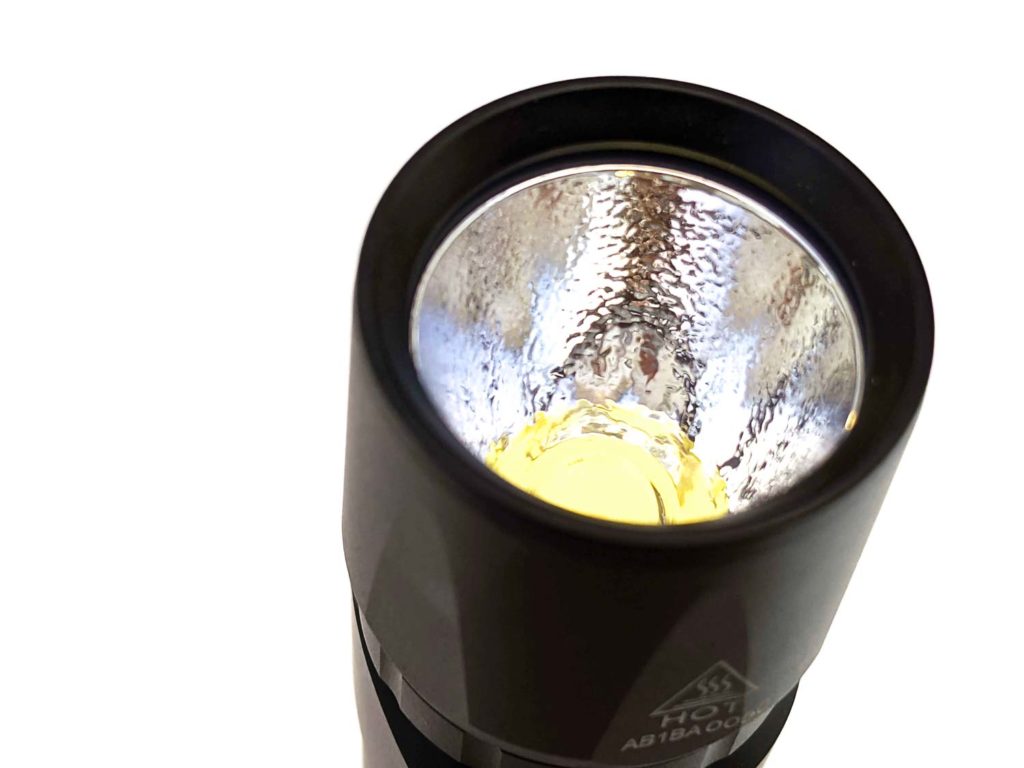
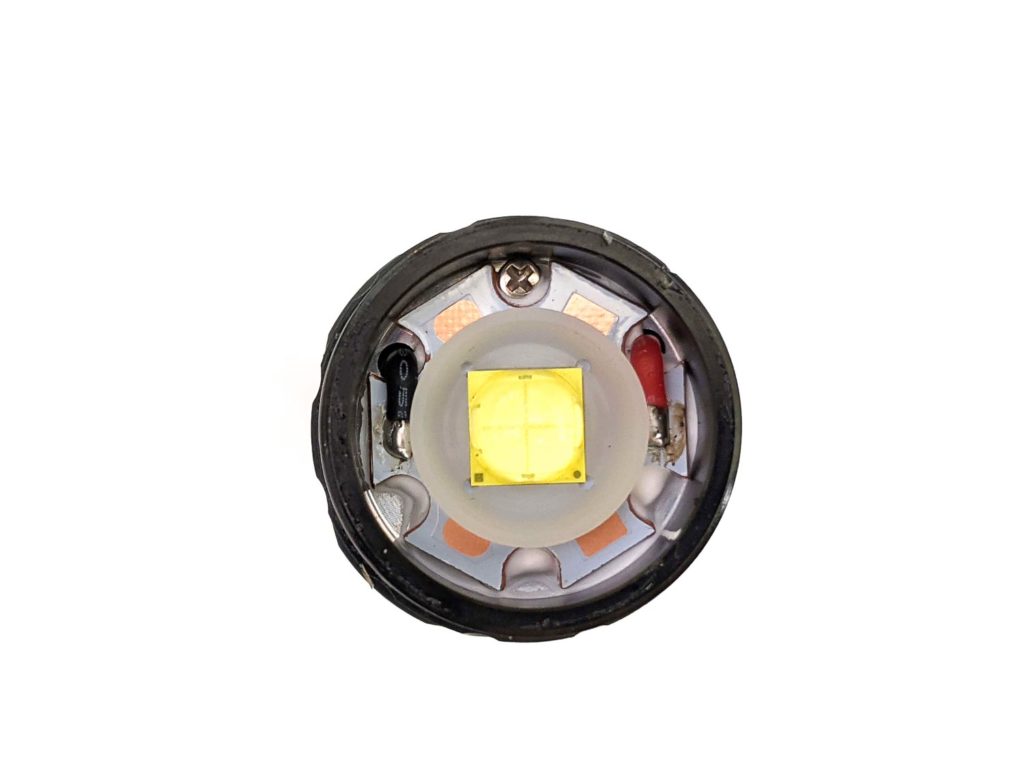
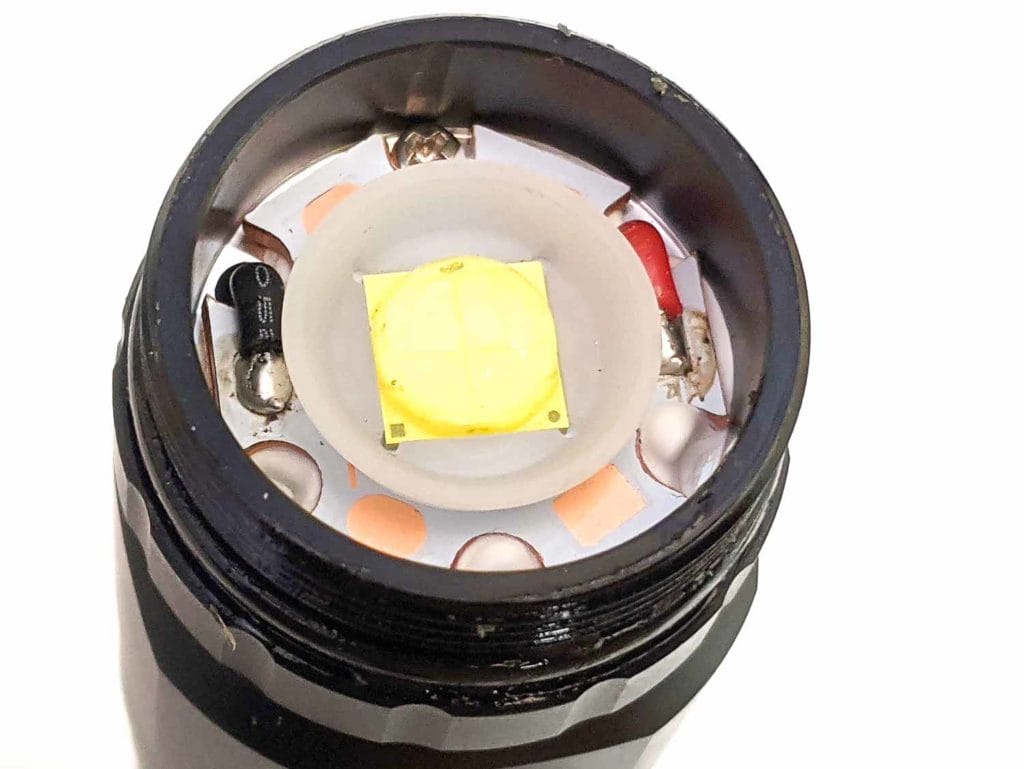
Dimensions and size comparison
- Length: 14.70cm / 5.78 inches
- Head diameter: 2.76cm / 1.08 inches
- Body diameter: 2.63cm / 1.03 inches
Weight:
- With: 170g / 6 oz
- Without cell: 97g / 3.4 oz
Flashlight Size comparison
Cyansky’s other lights: Cyansky H5, Cyansky P25, Cyansky M3.
From left to right: Emisar D4, Sofirn IF25A, Sofirn SC31 Pro, Sofirn SD05, Convoy S21B, Sofirn SP31, Wurkkos TS30, Litwood zoomie (extended), Cyansky P25
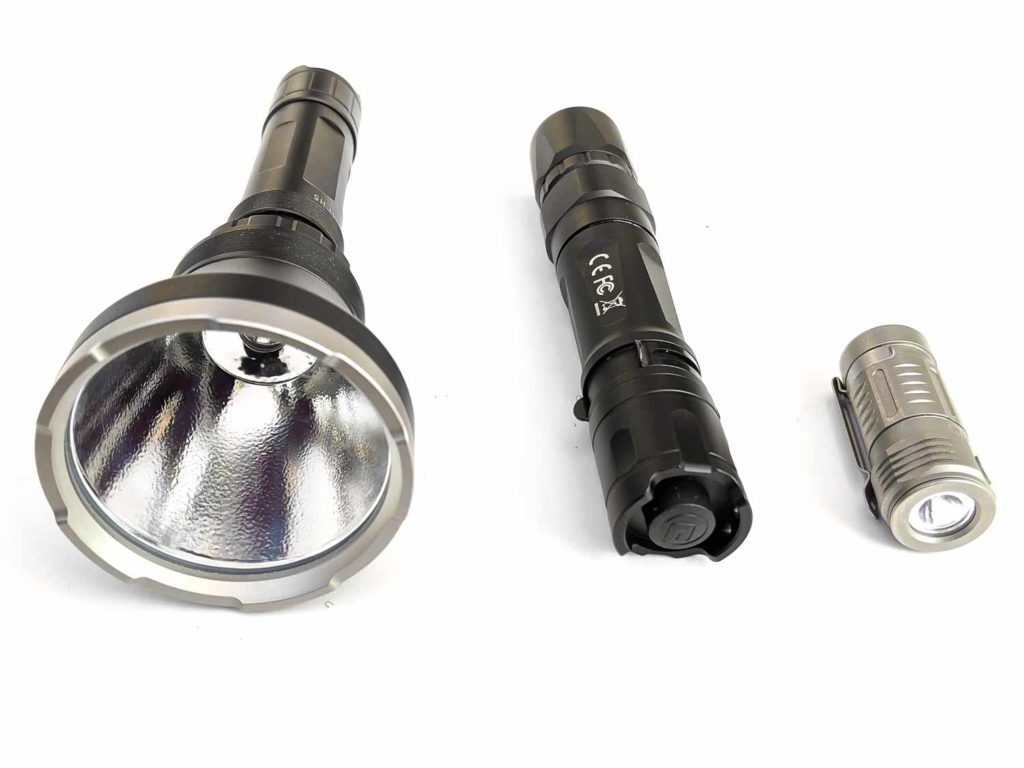
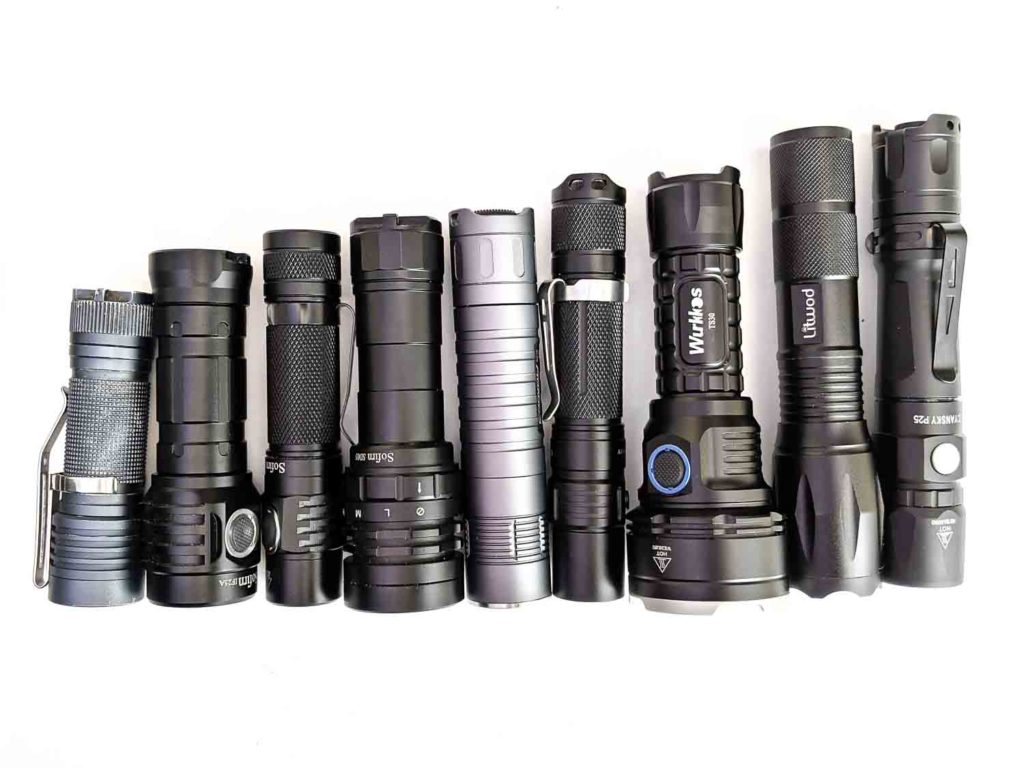
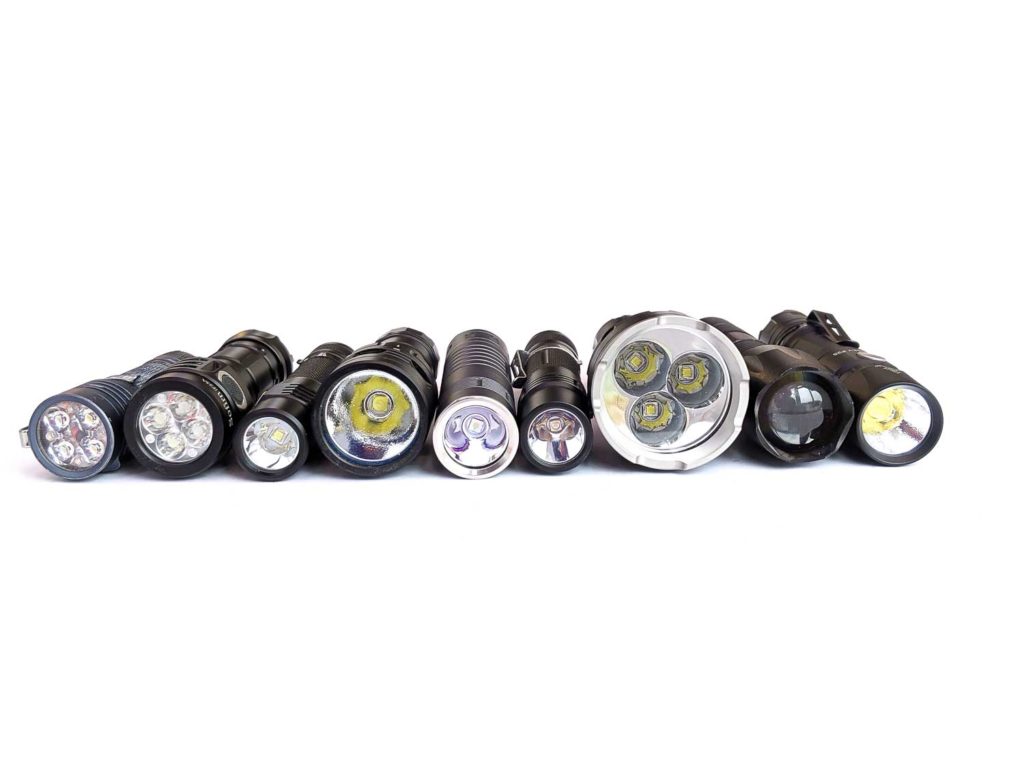
Driver & User Interface:
The P25 has 2 switches: a forward clicky mechanical switch at the tail and a side e-switch.
The tail switch only turns the light on and off. Being forward clicky, you can half press for momentary-on before the switch clicks into place. This makes the flashlight good for very precise timing control, such as for using with a weapon or signalling Morse code. The light has mode memory, so there’s no way to change modes with the tail switch.
As with other Cyansky lights, the strobe cycles between a fast and slow frequency. Unlike other modes, strobe isn’t memorised.
The e-switch changes modes and doesn’t allow turning the light off.
Modes: Low, Medium, High, Turbo, Strobe
From OFF:
- Half press tail switch: Momentary on
- Press tail switch: On
- E-switch: nothing
From ON:
- Tail switch: off
- Click: Next mode (L-M-H-T, then back to L)
- Hold: strobe
Mode memory:
- Yes
Low voltage warning:
- Cyansky says the P25 steps down at 3V but doesn’t turn off until the cell runs out. The cell seems to have LVP protection though, which kicks in around 2.9V
Strobe/blinkies
- Click to go to last mode
PWM
- I couldn’t detect PWM on any modes.
Batteries & Charging
The Cyansky comes with a rechargeable 21700 cell, rated at 5000 mAH. The cell includes a USB-C port for charging and red/green indicator light.
The cell charges at up to 1.35A from USB. The indicator turns green and the cell stops charging at 4.19V. From where the cell’s protection kicks in to when charging stopped, I measured 4074mAh of 5V going into the cell.
You can also charge the 76.2mm long cell in a charger if it fits but none of mine did.
The P25 has physical reverse polarity protection, which means that button cells are needed. Strangely, a 70.1mm flat top 21700 cell kind of worked but only at low and medium modes, so seemed to be making some contact. Cyansky says that 18650 cells fit too. I tested a 66.5mm button top cell, which worked fine, though rattled a bit. A 64.7mm flat top 18650 cell didn’t work at all. Stick to button top 21700 cells for best results.
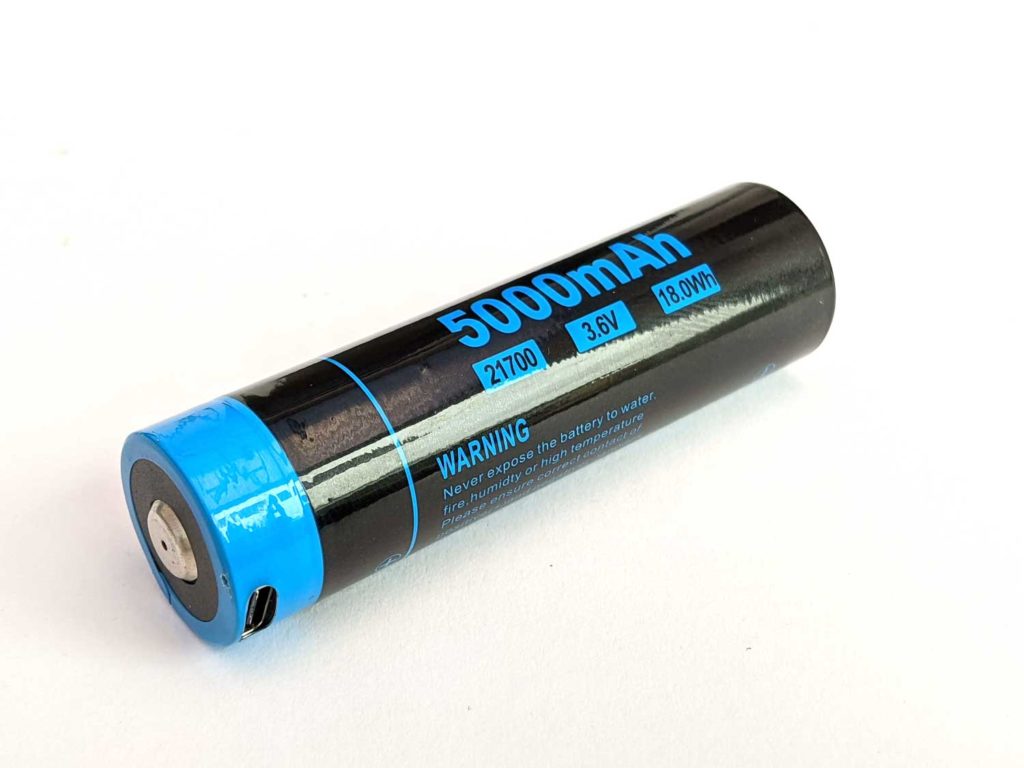
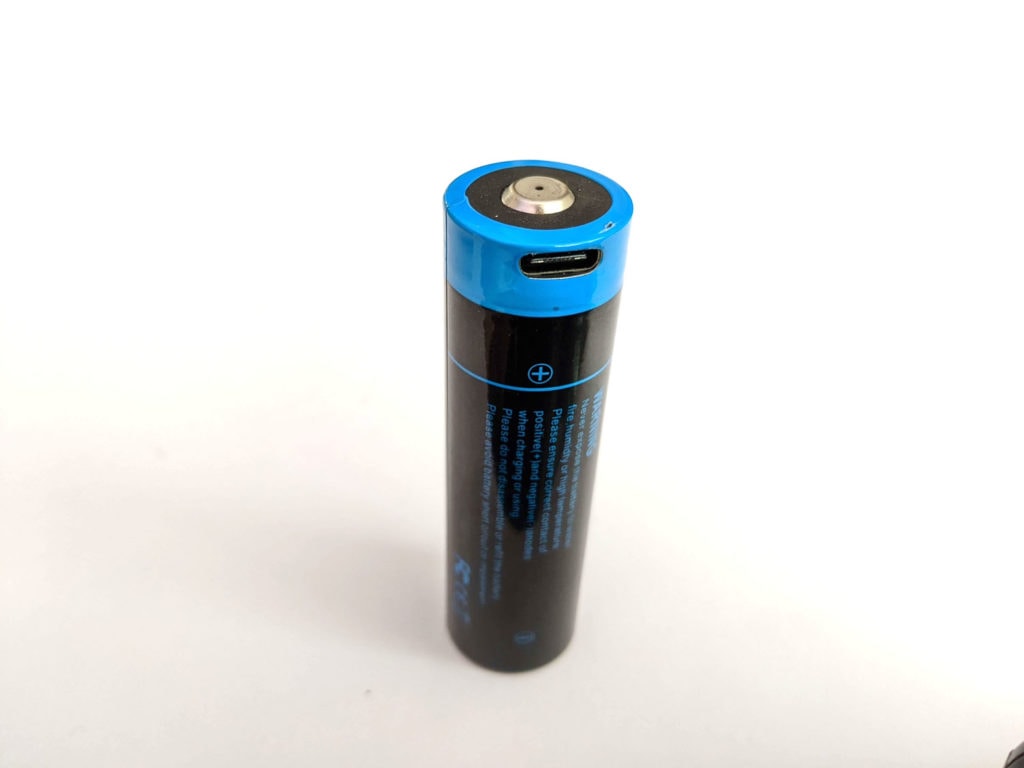
Performance
Amp and lumen measurements
I used Cyansky’s provided 5000mAh 21700 cell for all measurements. Current readings were taken with a Precision Gold PG10B DMM, all with the cell charged as much as it would take (4.19V).
All lumen measurements are from my home made integrating sphere, calibrated with a range of factory specced lights. Lux measurements are done with a UNI-T UT383S lux meter and Adafruit TSL2591 connected to a Raspberry Pi (using RuTiTe by bmengineer). Expect them to be within +/-10%.
Throw was measured at 5m.
| Mode | Current | Lumens | Throw |
| Low | 0.05A | 62 lm | 24m / 150 cd |
| Medium | 0.40A | 461 lm | 70m / 1225 cd |
| High | 2.28A | 1591 lm | 147m / 5400 cd |
| Turbo (0sec) | 9.94A | 4236 lm | 212m / 11,275 cd (0s) |
| Turbo (30sec) | 4A | 3300 lm | 195m / 9525 cd (30s) |
| Turbo (10min) | – | 1491 lm | – |
Cyansky spec low, medium and high as 40, 150 and 500 lm respectively but it looks like they changed their driver modes after publishing their specs. They seem to have bumped up high mode and moved medium to where high was. Although this means “low” isn’t very low, it’s still a good change for a tactical light in my opinion.
Runtime graph
Turbo
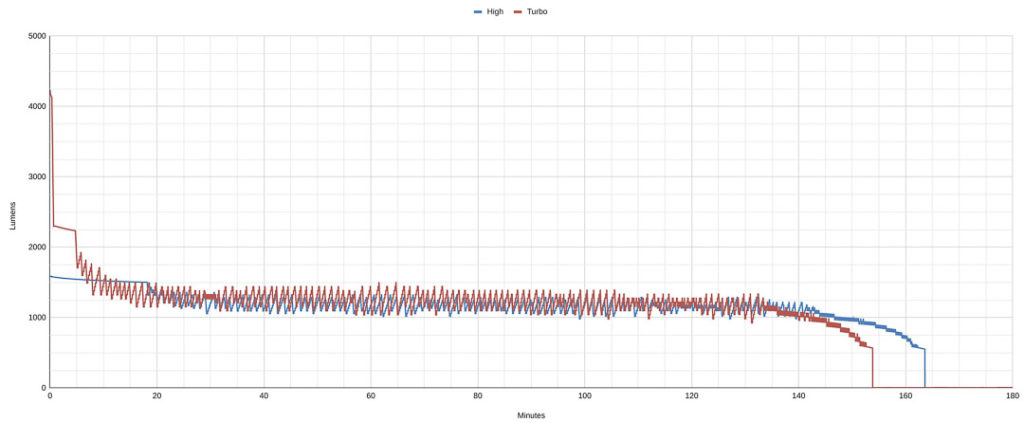
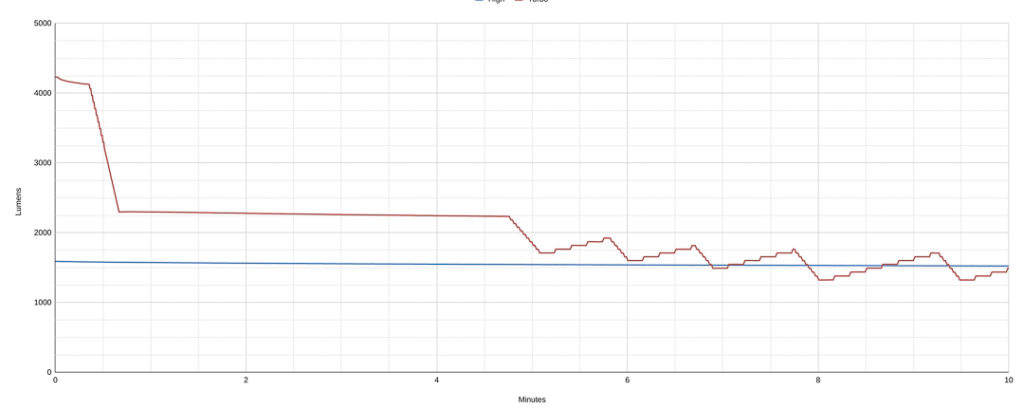
Now you see what the zigzag on the packaging was all about. Cyansky’s driver keeps adjusting the brightness to ensure the light doesn’t overheat. This process is normal but Cyansky’s driver algorithm seems to overshoot equilibrium each time, resulting in the pattern you see. Cyansky doesn’t seem bothered about this and even show it on the box. Whilst this looks bad on a chart, it actually isn’t really noticeable in real life, unless you’re carefully looking out for it.
At 0s, turbo kicks off at 4236 lm and starts to drop immediately and quickly. At 30s it’s down to 3300 lm and it keeps dropping until 2300 lm at 40 seconds. Cyansky rates the P25 as 3000 lm at the 30 seconds ANSI standard – it looks like my numbers are much higher but just 3 seconds later, mine was already below the spec.
The P25 stays above 2000 lm for 5 minutes, then the zigzags kick off. The P25 drops very slowly at each zigzag and after 2 hours is at 1200 lm.
The cell measured 0V at the end of the run time as the protection had kicked in. Charging it for a second brought it back to life at 2.89V.
High
High is specced at 500 lm but obviously isn’t. As with many lights, high is set around the highest sustainable level, starting off at 1591 lm. High is lower than turbo for the first 5 minutes, then tracks it quite closely. High lasts an extra 10 minutes before it turns off.
Beamshots
Distance to the building on the left is 55m. Photos were taken with a Pixel 3a, set to 1/17s shutter speed and ISO 1400, F1.8. White balance was locked on cool white, so the 4000K D4V2 looks very orange.
- Cyansky P25 (XHP70.2)
- Emisar D4V2 (XP-L HI 4000K)
- Sofirn SC31 Pro (SST40)
- Sofirn SD05 (XHP50.2)
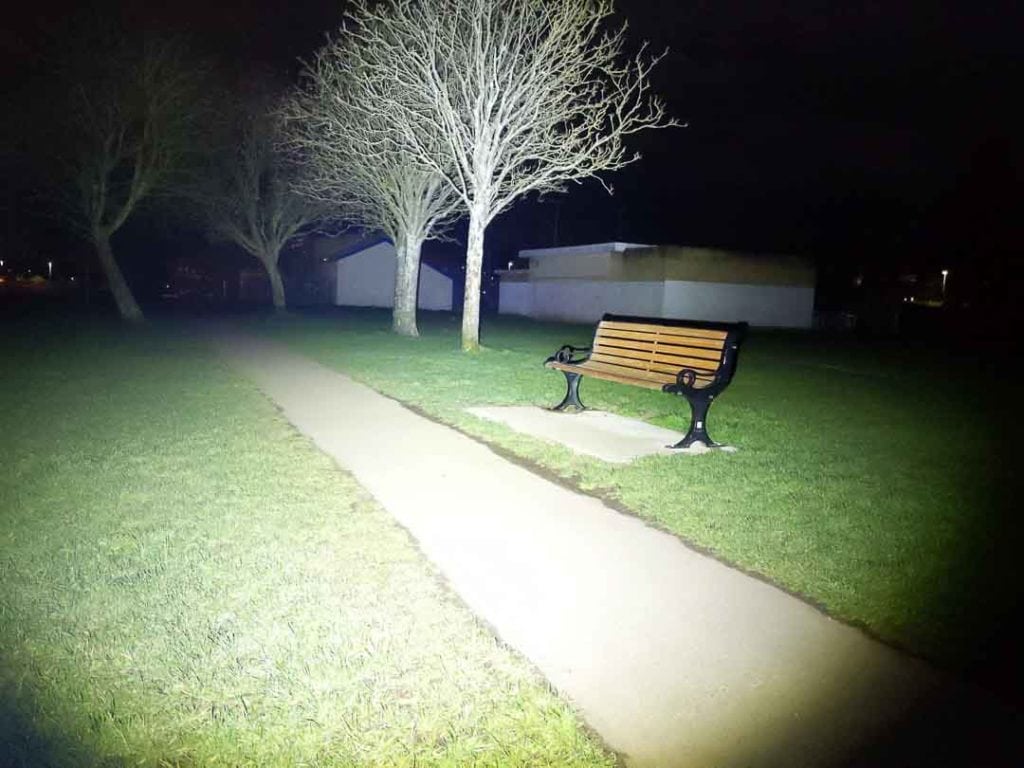

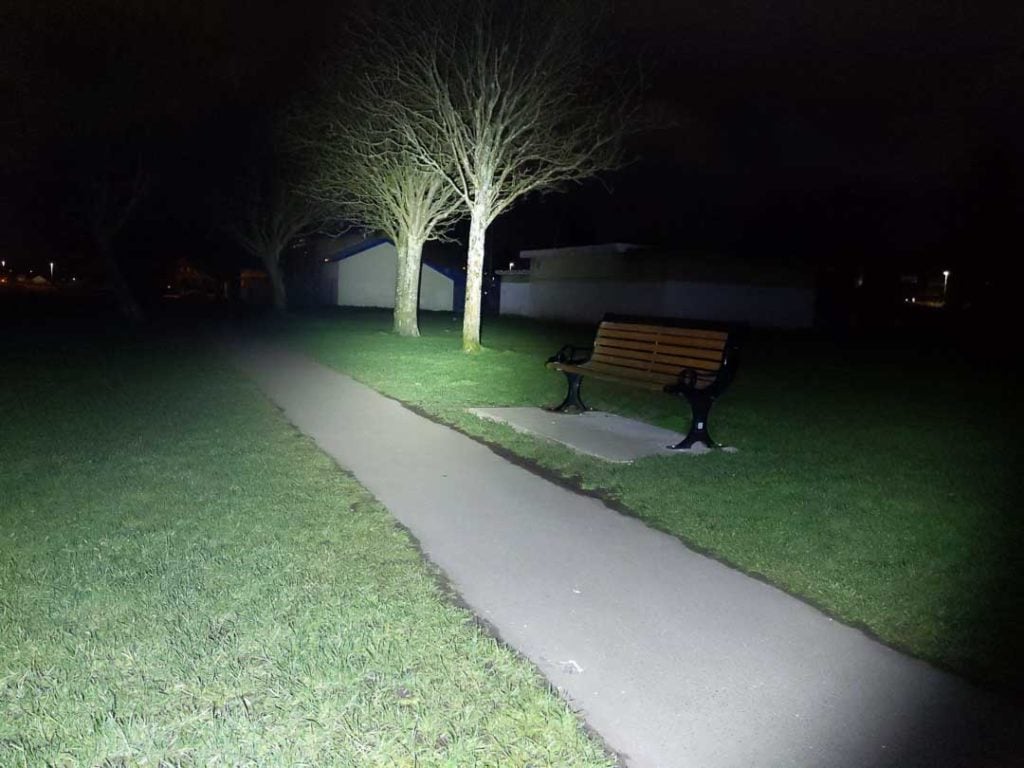

Disclaimer: This flashlight was sent to me for review at no cost by Cyansky. I have not been paid to review, nor have I been holding back on problems or defects.
Final Verdict
Pros
- Built in charging
- Good output and runtime
- Feels solid and well built
- Comes with holster, good lanyard and clip
Cons
- Very floody
- No moonlight mode (but other modes are well spaced)

4.5 stars: ★★★★⋆
The Cyansky P25 is difficult to fault, aside from the XHP70.2 being so floody. There’s not much Cyansky could have done here, unless they went with a different emitter that wasn’t so bright. In fact as well as the P25, Cyansky also have their smaller P20, which is an 18650 light with the less bright and less floody SST40. Being floody isn’t a problem if your aim is to light up short distances but be aware that it’s less versatile than other tactical lights that will throw 300m or more. It’s also not a beautiful high CRI emitter and doesn’t have a moonlight mode – but those kinds of things aren’t really a priority in a tactical light.
The gloop on the threads isn’t great but doesn’t cause any problems – don’t take it apart and it’ll be fine. The driver zigzag behaviour is odd but isn’t bad. In fact the driver seems to produce very respectable runtimes. Other Cyansky lights we’ve reviewed have had good regulated drivers and the P25 is no different. Maintaining over 1200 lm for over 2 hours on a single cell puts the P25 in the same leagues as high end lights like the Acebeam L35.
The other thing to be aware of is the size. It’s definitely long for a flashlight, so might be awkward for those with small pockets or hands.
In summary: the Cyansky P25 is great. It seems well designed, with good components, and works as expected. Just remember that it’s not a thrower.
Note: the Cyansky P25 has been upgraded, and replaced, by the Cyansky P25 v2.